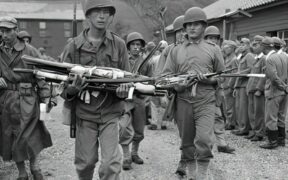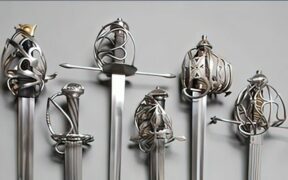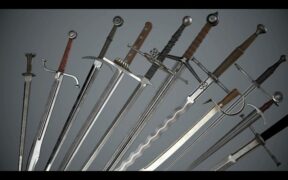Our content features commercial links to our products, committed to transparent, unbiased, and informed editorial recommendations. Learn More
Exploring The Sword Types Used in World War II
NO AI USED This Article has been written and edited by our team with no help of the AI
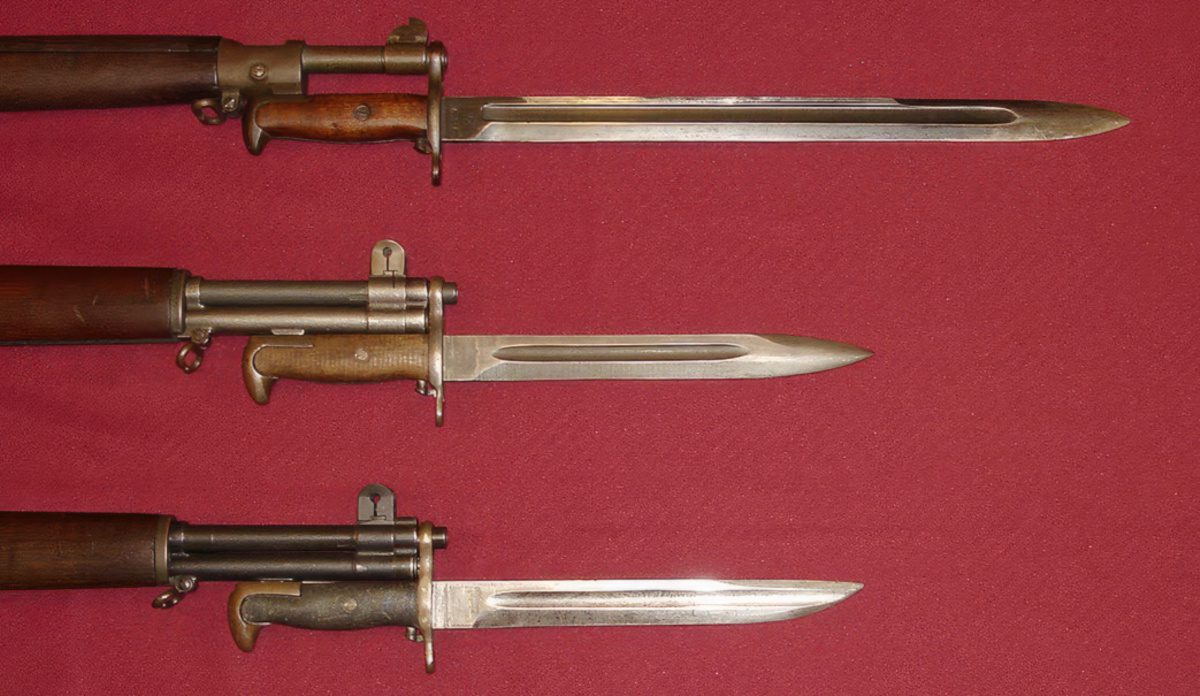
By World War II, guns, tanks, planes, and aircraft carriers dominated warfare. While the sword no longer ruled the battlefield, this weapon still occupied an important ceremonial position in the armies that participated in WW2, particularly in the Japanese military and could be used to kill in close combat situations when all other options had been exhausted.
This article will examine the role of swords in the biggest and deadliest war of all time and explore how they were used in different contexts.
Japanese Swords
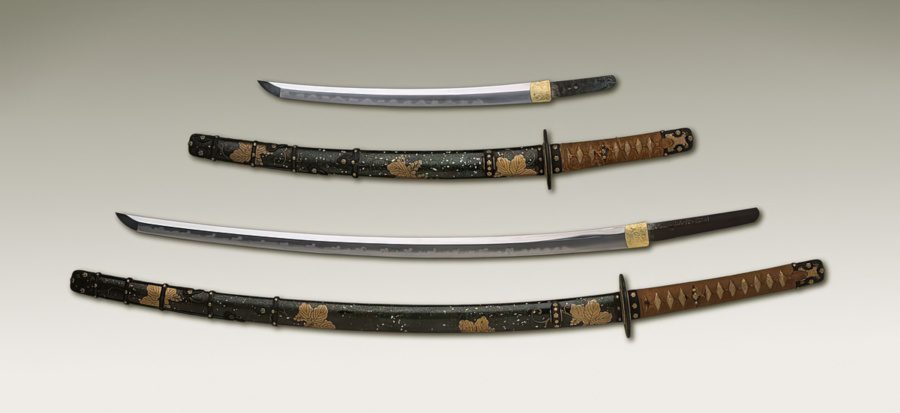
The sword has long been a symbol of power and status in Japan and has always represented military might on the island nation. The WWII Japanese army used two primary categories of sword: Guntō (軍刀) and Nihontō (日本刀). Let’s take a look.
Guntō (軍刀)
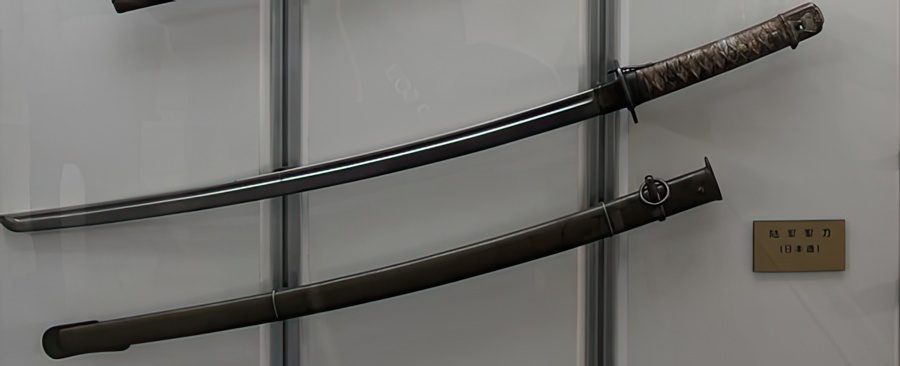
This term refers to military swords produced for the Japanese army and navy after the end of the samurai era in the late 19th century. Beginning with the Meiji restoration in 1868, the Guntō were issued by Japanese Emperors in an effort to modernize the military while still retaining a connection to Japanese samurai heritage. During World War 2, there were two primary types of guntō:
Kyū Guntō (旧軍刀)
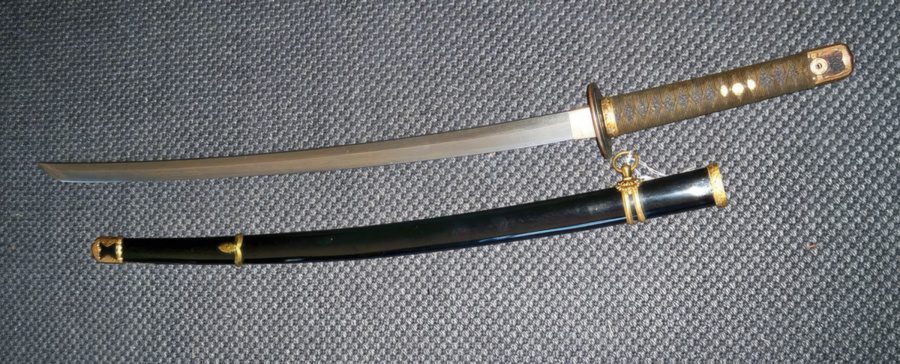
First introduced by Emperor Meiji in the second half of the 19th century, these swords resembled their western counterparts with a straight blade and brass hilt. Though Kyū Guntō would be replaced by its successor, this sword still saw use during World War II.
Shin Guntō (新軍刀)
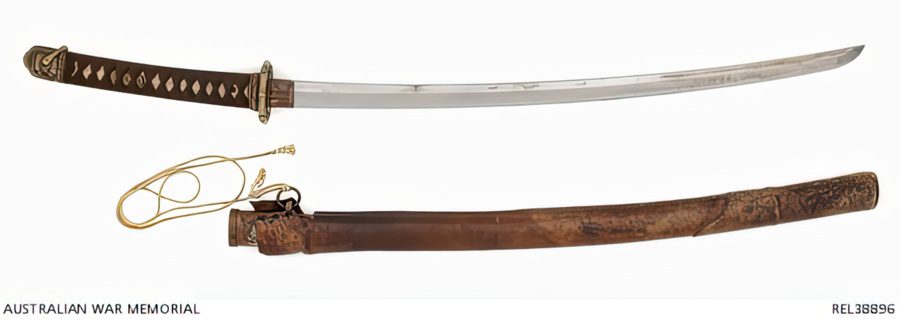
Introduced in 1934 and issued to officers of the Imperial Japanese Army and Navy, the Shin Gunto sword was designed to resemble traditional Japanese samurai swords with a slightly curved, single-edged blade.
These Japanese officer swords were typically decorated with a brass guard, a cloth-wrapped hilt, and the scabbard was often made of metal and painted to resemble wood, though some wooden scabbards were also used. This return to the samurai-style sword was intended to reinforce the ancient heritage of Japan’s warrior caste.
The WW2 Japanese army issued Guntō to officers for the following reasons:
- Symbol of authority – A sword served as a visible sign of an officer’s rank and authority within the military hierarchy.
- Connection to heritage – The guntō helped to maintain a link between Japan’s modern military and its samurai past, emphasizing the importance of martial values and the warrior spirit.
- Close combat weapon – Though not the primary weapon in modern warfare, the guntō could still be used effectively in hand-to-hand combat situations when firearms were not practical or available.
- Ritual purposes – Swords played a role in ritual suicides (seppuku) and other ceremonies, reinforcing the importance of honor and tradition in Japanese military culture.
Nihontō (日本刀)
Referring to traditional Japanese swords such as the katana, the wakizashi, and the tanto, Nihontō was the other category of swords used by Japan during World War II. Some high-ranking officers and members of elite units such as the Imperial Guard, carried family heirloom swords or custom-made nihontō as a symbol of their status and connection to Japan’s warrior heritage.
Katana
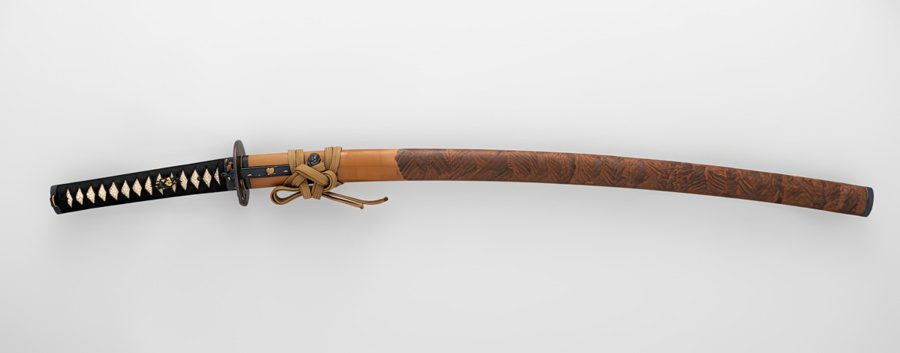
The katana is a traditional Japanese sword known for its slightly curved, single-edged blade, and a long handle designed to accommodate a two-handed grip. Featuring a unique forging process and an intricate folding technique, the Japanese katana is renowned for its sharpness, strength, and exceptional balance, making it an iconic symbol of the samurai warrior class.
Wakizashi
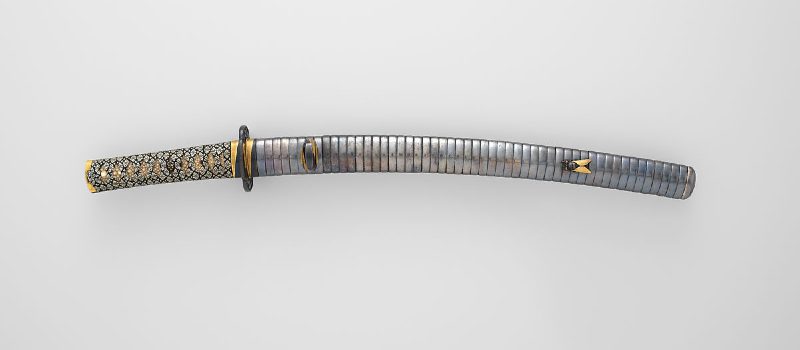
The wakizashi is a classic Japanese short sword characterized by its shorter, curved, single-edged blade and a hilt designed for one-handed use. Often paired with the katana, the wakizashi served as a sidearm for samurai warriors, providing versatility in close combat situations and fulfilling various ceremonial functions.
Tanto
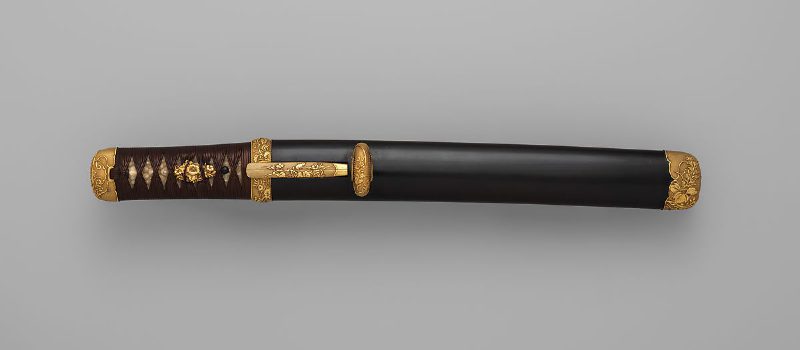
The tanto is an antique Japanese dagger featuring a straight or slightly curved, single-edged blade and a hilt designed for one-handed use. Often carried by samurai warriors, the tanto functioned as a personal sidearm for self-defense and was also used in various ceremonial roles such as ritual suicide (seppuku).
American and European Swords
Japanese soldiers were not the only ones to use swords during World War II. Though weapons like the western cavalry sword were becoming obsolete, various sword designs were still useful on the battlefield in close combat situations.
Bayonet
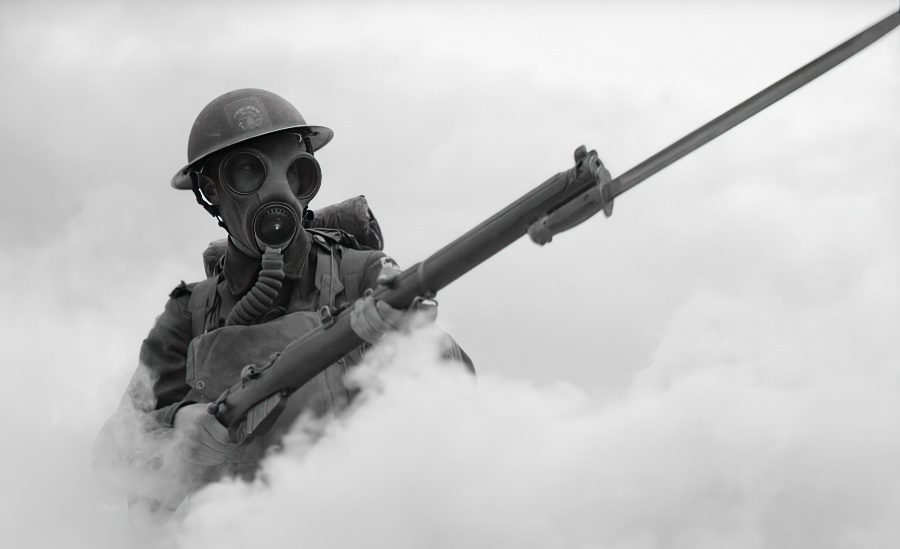
The most widely used sword in World War II was the bayonet. Attached to the muzzle of a rifle, the bayonet served as the last line of defense for many soldiers in close quarters with the enemy. Here is a look at some of the bayonets used by western militaries on the European fronts.
US M1 Bayonet
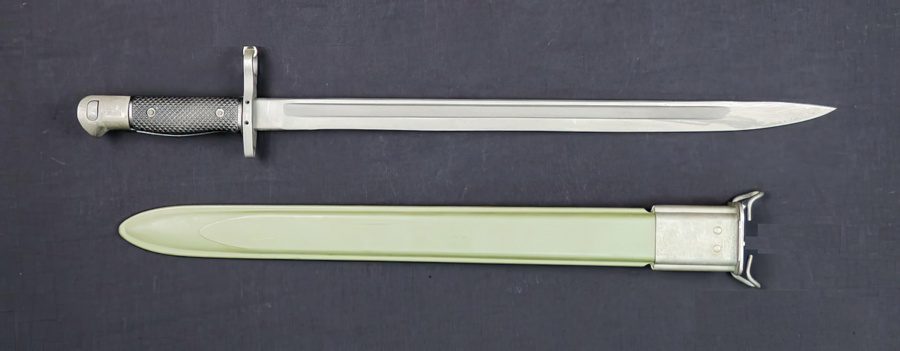
The US M1 bayonet is a 10-inch, single-edged blade designed to be attached to the muzzle of the M1 Garand rifle, the standard firearm for American infantry during World War II. Primarily used for close-quarters combat, the M1 bayonet provided soldiers with an additional weapon in situations where firearms were not practical or ammunition was depleted.
British No. 4 Spike Bayonet
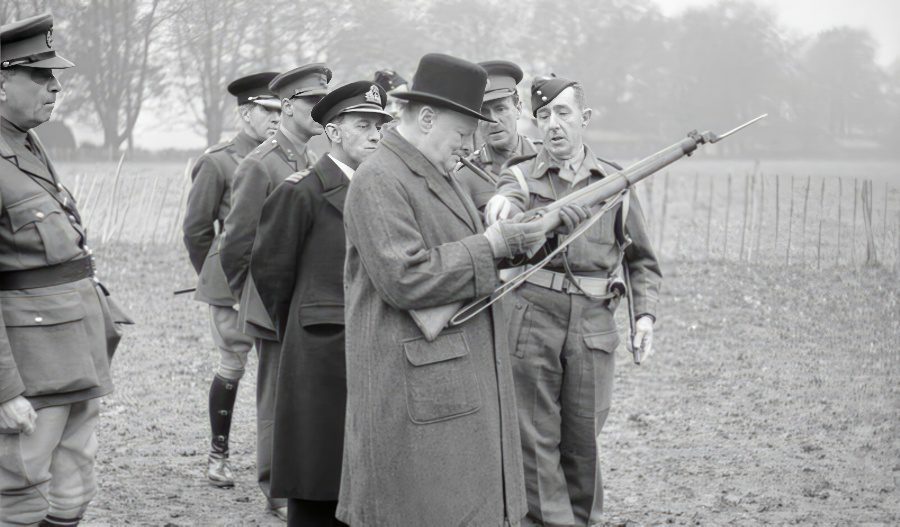
The British No. 4 Spike bayonet is a simple, lightweight design featuring a slender, spike-shaped blade intended to be mounted on the Lee-Enfield No. 4 rifle which was the primary British infantry weapon during World War II.
S84/98 III Bayonet
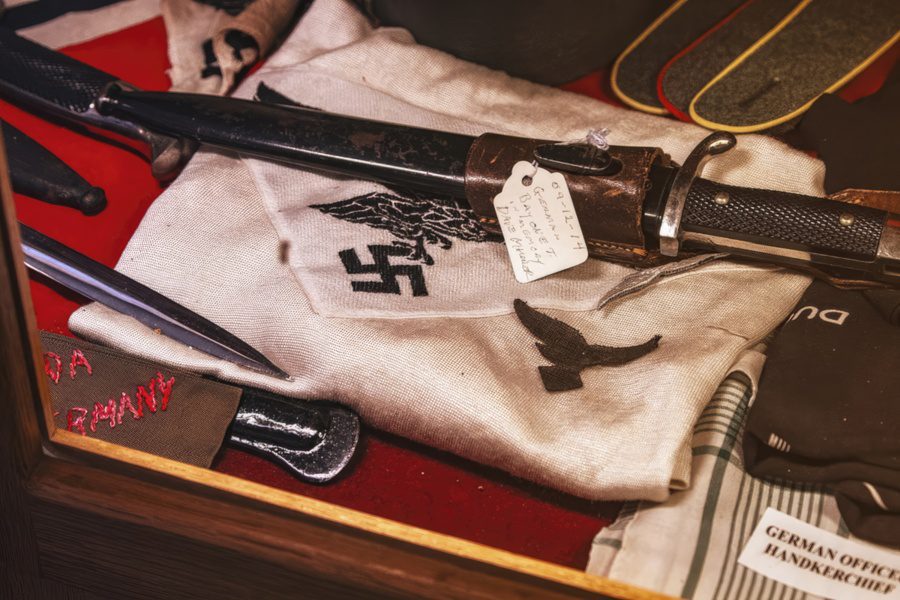
The S84/98 III bayonet is a German bayonet featuring a 10-inch, single-edged blade with a distinctive, upward-curving profile. Designed to be mounted on the Karabiner 98k rifle, the standard-issue firearm for the German military during World War II, the S84/98 III bayonet was a versatile and robust weapon used by German soldiers.
Soviet SKS Bayonet
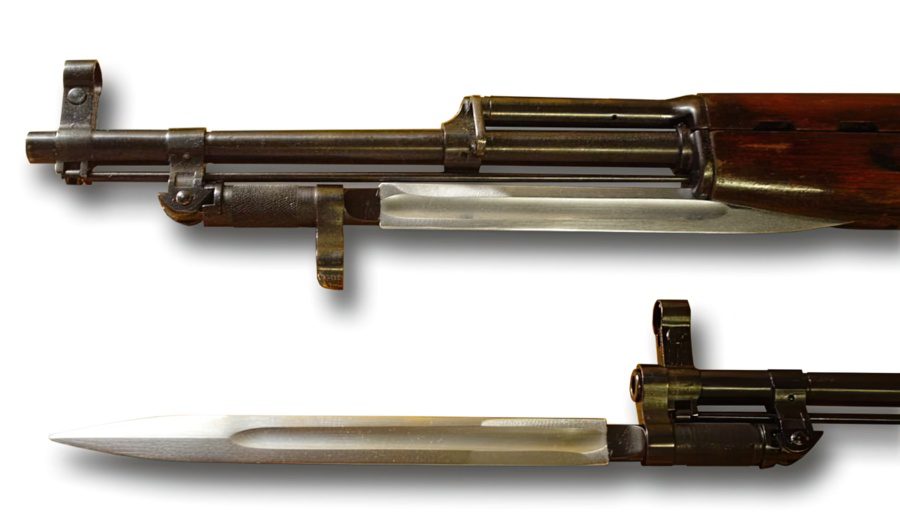
The Soviet SKS bayonet was designed to be mounted on the SKS semi-automatic carbine, which entered service with the Soviet military in 1945. The SKS bayonet features a 9.5-inch (24 cm) blade with a spear point and a single edge. Typically, the blade was either blued or left in-the-white (uncoated steel) depending on the production period.
The bayonet had a unique folding design, allowing it to be folded against the rifle’s stock when not in use, reducing the overall length and preventing it from snagging on obstacles. Although the SKS carbine and its bayonet saw limited action during World War II, they were widely used in subsequent conflicts and by various military forces around the world.
Combat Knives and Daggers
Longer swords were becoming obsolete on the battlefield, but soldiers still needed a blade they could use in combat. Militaries issued standard daggers and knives for soldiers to use in close quarters against enemies while also serving a variety of other utility purposes.
Fairbairn-Sykes Fighting Knife
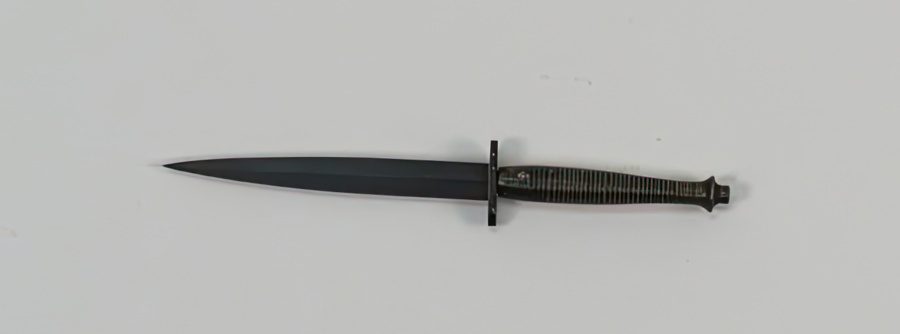
Issued by the British military, this iconic double-edged dagger was designed by William Fairbairn and Eric Sykes. It featured a slender, stiletto-like blade, optimal for thrusting and stabbing along with a distinctive crossguard and handle, making it well-suited for use by special forces, including the SAS.
US M3 Fighting Knife
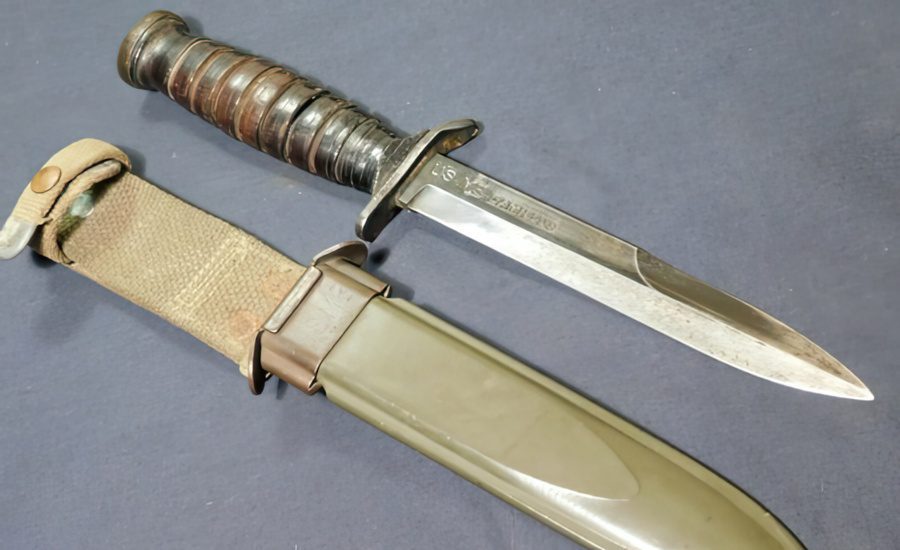
The M3 was a standard-issue combat knife for the US military, featuring a 6.75-inch, single-edged, spear-point blade made for stabbing and slashing. The knife was designed to replace the M1917/1918 trench knives of WWI and was issued to soldiers not equipped with the M1 bayonet.
KA-BAR
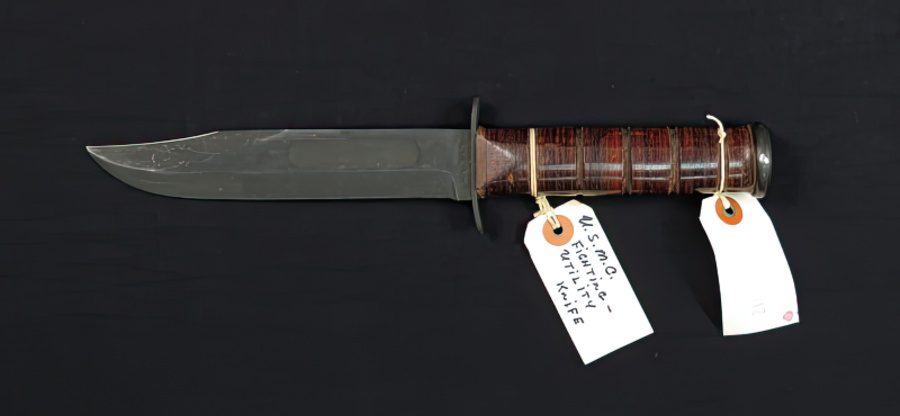
The KA-BAR is a versatile and robust utility knife issued to US Marines during World War II. It features a 7-inch, single-edged clip point blade with a slight curve and a leather-wrapped or synthetic handle, making it suitable for a wide range of tasks, from close combat to fieldwork.
German Gravity Knife (Fallschirmjägermesser)
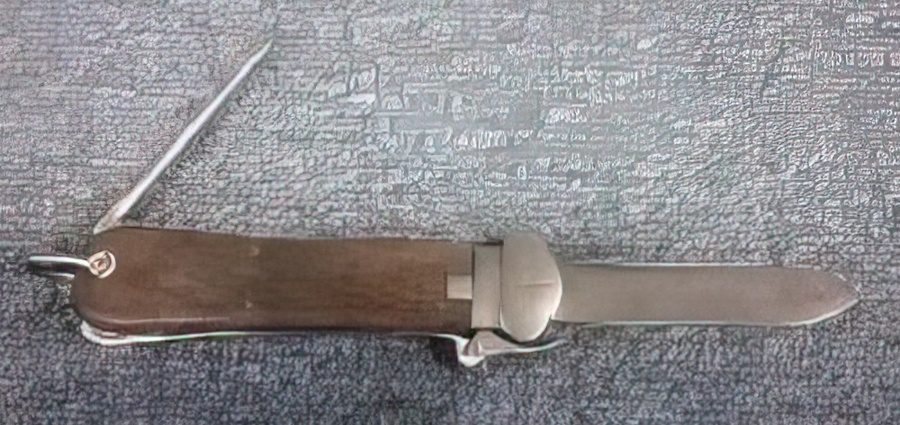
This unique folding knife was issued to German paratroopers and featured a 3.5-4-inch, single-edged, drop-point blade. The blade could be deployed by pressing a button and was designed to be used with one hand, making it practical for airborne troops.
Soviet NR-40 Combat Knife
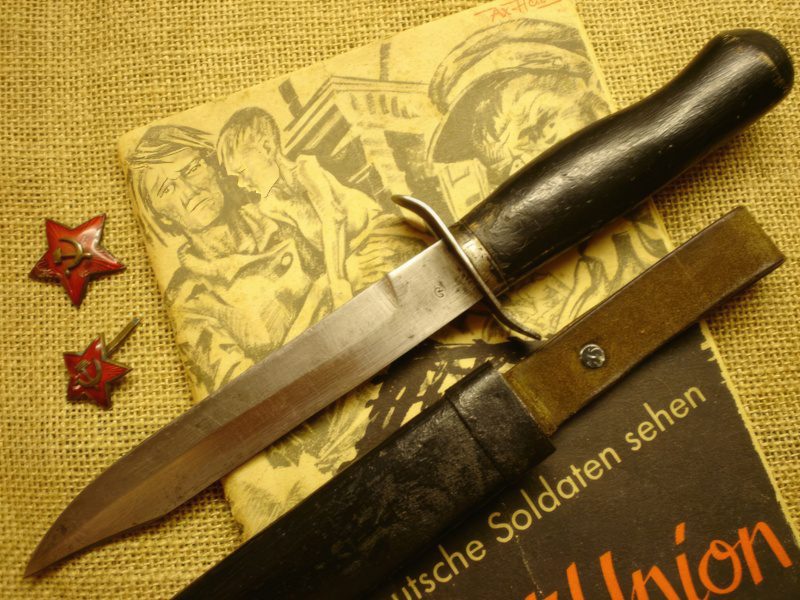
The NR-40 was a standard-issue combat knife for the Soviet military, featuring a 6-inch, single-edged, clip point blade designed for stabbing and slashing. The knife was inspired by traditional Cossack and Caucasian blades and was widely used by Soviet soldiers, particularly scouts and special forces.
Ceremonial Swords
Much like some of the WWII Japanese swords, western militaries issued ceremonial swords to army officers as a recognition of status and rank. The following swords were held by army officers during the second World War.
US Army Officer’s Saber
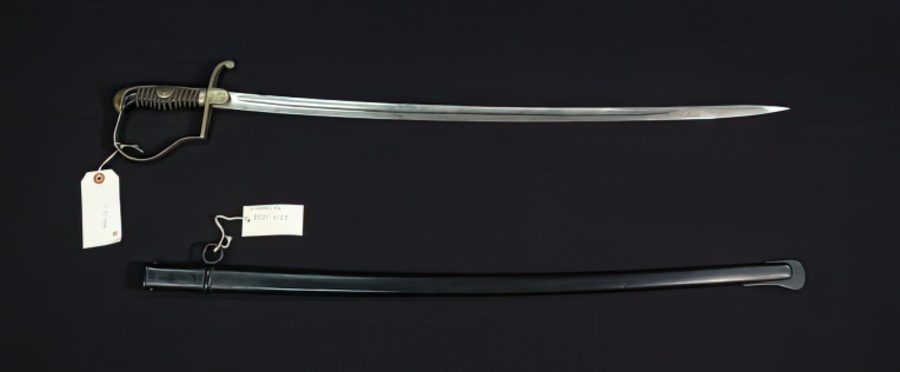
The US Army Officer’s Sword is a ceremonial saber worn by commissioned officers during formal occasions. It features a slightly curved, single-edged blade with decorative etchings, a brass hilt with a knuckle guard, and a wire-wrapped grip, reflecting the tradition of European cavalry sabers.
US Marine Corps Mameluke Sword

The Mameluke Sword, also known as the NCO sword (non-commissioned officer), is a ceremonial weapon worn by US Marine Corps officers during formal events. Its design, inspired by the swords of Ottoman Mamluk warriors, features a slightly curved, single-edged blade, a crossguard with ornate langets, and an ivory or imitation ivory grip with brass fittings.
British Army Officer’s Sword (Pattern 1897)
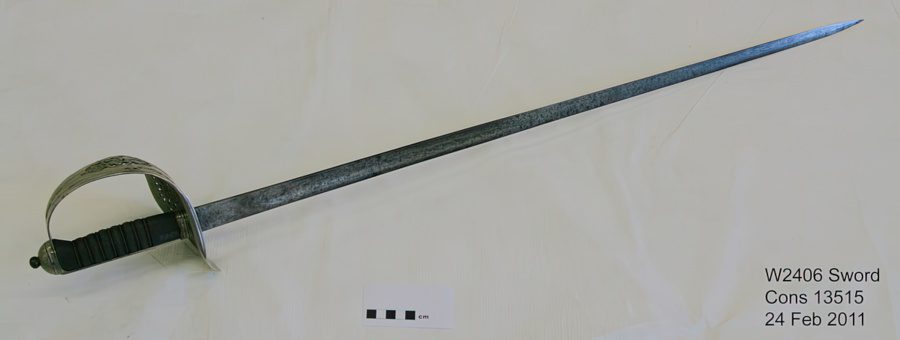
The Pattern 1897 Infantry Officer’s Sword is a ceremonial weapon used by British Army officers for formal occasions. It features a straight, double-edged blade with a central fuller, a steel hilt with a three-quarter basket guard, and a wire-wrapped grip, embodying the tradition of British military swords.
French Army Officer’s Saber (Sabre d’Officier)
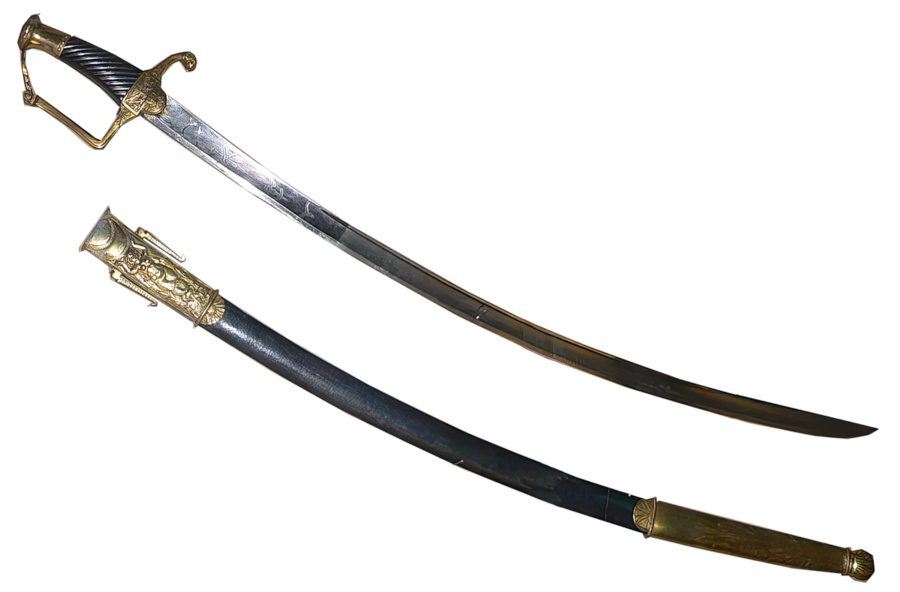
The French Army Officer’s Saber is a ceremonial sword worn by officers of the French military during formal events. It typically features a slightly curved, single-edged blade, an ornate brass hilt with a knuckle guard, and a wire-wrapped grip, reflecting the long tradition of French cavalry sabers.
Final Note
In conclusion, though we can see the sword being overshadowed by other weapons at the turn of the 20th century, this weapon still served an important purpose for militaries around the world.
